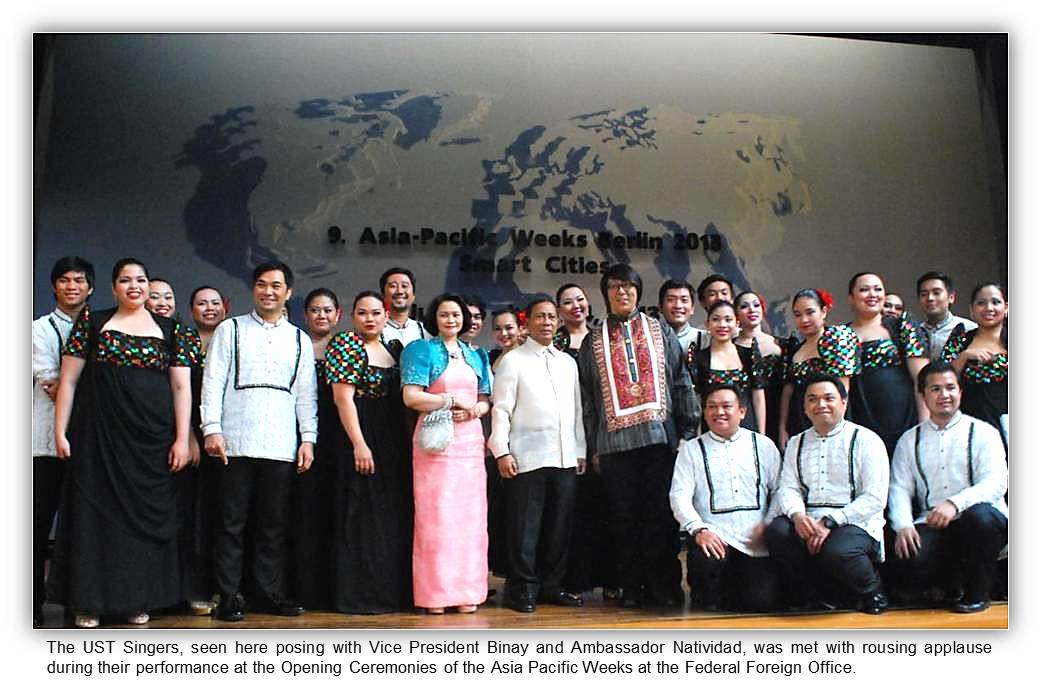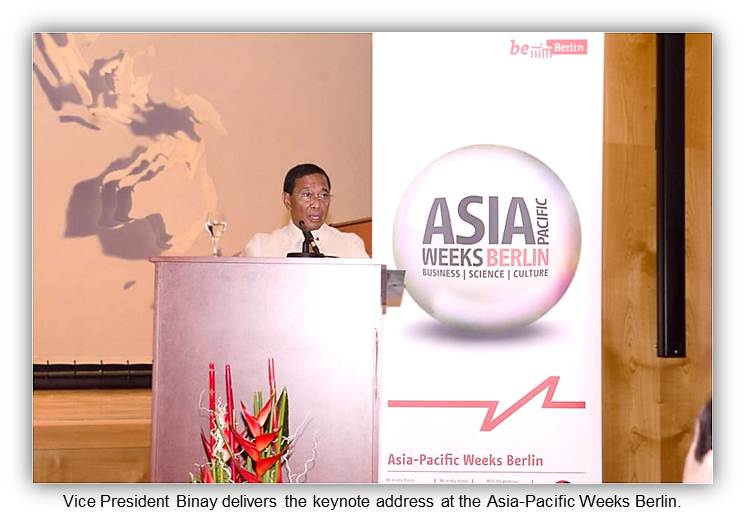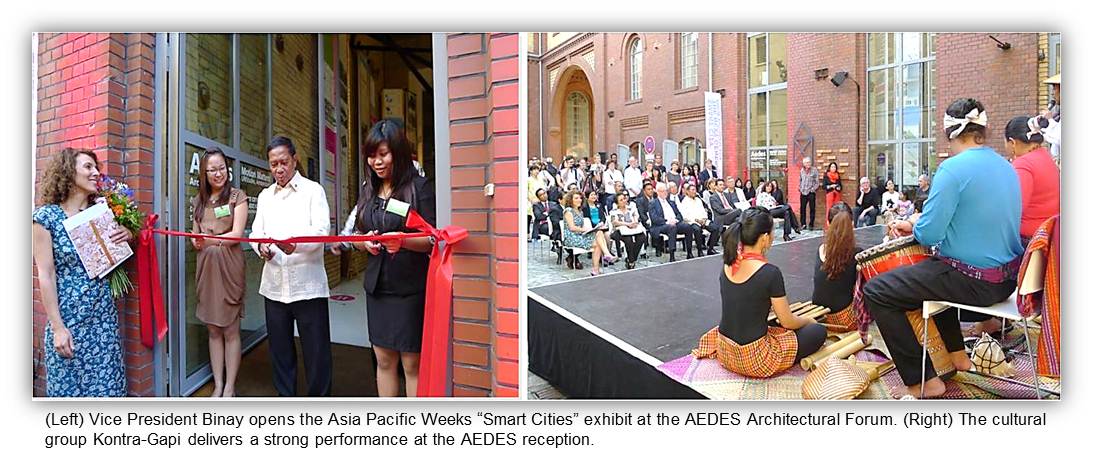
27 June 2013 – The Philippines made a splash in this year’s Asia Pacific Weeks (APW) in Berlin, a premier business forum organized by the Asia Pacific Forum, Berlin Ministry for Economics, Technology, and Research, and the Federal Foreign Office.
 Vice President Jejomar C. Binay delivered the keynote address at the opening ceremonies of the APW. The Philippine Embassy in Berlin, led by Ambassador Maria Cleofe R. Natividad, ensured strong Philippine participation in this year’s APW edition.
Vice President Jejomar C. Binay delivered the keynote address at the opening ceremonies of the APW. The Philippine Embassy in Berlin, led by Ambassador Maria Cleofe R. Natividad, ensured strong Philippine participation in this year’s APW edition.
His key message on responding to the challenges faced by today’s cities was that “the government can never go it alone. Public-Private Partnership, with civil society chipping in, is the new model. Government needs strong partners from the business community and the civic sector, just as business needs the prudential presence of government in many of its endeavors.” Vice President Binay noted that urban sprawl is also posing significant challenges to the delivery of basic services and is exposing the population to significant risks associated with climate change such as flooding.
Vice President Binay also touted the strong gains made by the Philippine economy, with the 7.8% GDP growth in Q1/2013 setting the pace for the Asia Pacific region. Economic growth continues to be city-driven, with 60% of the Philippines’ population living in urban areas.
The Vice President emphasized that the Asia Pacific Weeks provides an innovative venue to rethink urban planning and transform cities into green, mobile, creative, and safe places to live. He also commended the work of the organizers and the Philippine Embassy and thanked Ambassador Natividad for the Embassy’s efforts for his visit come to fruition.
Noting both his role as the Chair of the Housing and Urban Development Coordinating Council (HUDCC) and his 20-year experience as Mayor of Makati, Vice President Binay emphasized the importance of public-private partnerships in sustaining the development of smart cities. Vice President Binay recalled that while he was uniquely afforded the necessary time and space to institute reforms in Makati City, such as the prioritization of basic services and pioneering e-government services, most local government officials operate on a narrower time horizon.
The opening ceremony also included a performance by the University of Santo Tomas (UST) Singers, who regaled the assembled audience with a compact set of German and Filipino songs, highlighted by their German rendition of Beethoven's "Ode an die Fruede" (Ode to Joy), which was met with a rousing applause by the assembled diplomats, business leaders, and policy experts.
During his presentation of “Smart City Makati – Business Portal” on June 07, Vice President Binay delivered a comprehensive presentation on Makati City’s holistic and people-centered agenda. In particular, Mr. Binay highlighted that smart transportation, involving e-Jeepneys and hybrid buses, and the rise of mixed use developments, which integrate commercial and residential properties, were sustaining Makati’s premier position as a green and connected city.
The Vice President also highlighted that Makati City had adopted an advanced e-government platform, integrating all local offices, which has ensured the speedy and efficient processing of business applications.

The Vice President inaugurated the Aedes Architecture Forum’s Exhibit “Smart City the Next Generation: Focus Southeast Asia,” which brought together nearly 50 veteran and up-and-coming architects, engineers, and artists with the aim of developing intelligent and sustainable solutions to Southeast Asia’s urban context. Also in attendance was Mr. Felino Palafox, who has launched a collaborative private sector initiative in formulating ten principles for the sustainable development of Metro Manila.
The launch of the exhibit was preceded by a performance of the Kontemporaryong Gamelan Pilipino (Kontra-Gapi) of the University of the Philippines. The Kontra-Gapi, led by Professor Abraham, electrified the crowd with its modern blend of music and dance inspired by traditional Filipino and Southeast Asian ethnic and cultural traditions. END

